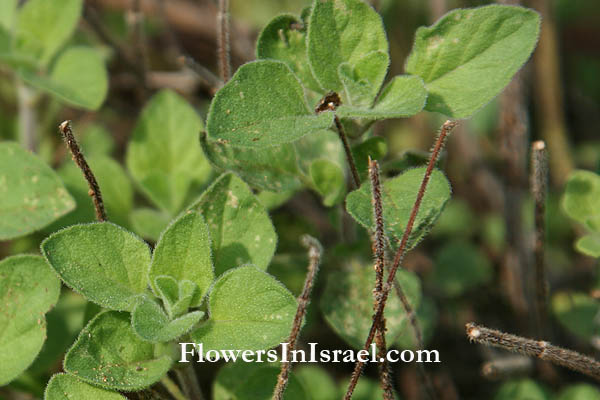Hebrew: אזובית פשוטה, Arabic: زعتر, صعتر
| Scientific name: | Origanum vulgare L. | |
| Common name: | Wild marjoram, Greek Oregano, Oregan | |
| Hebrew name: | אזובית פשוטה | |
| Arabic name: | زعتر, صعتر | |
| Family: | Labiatae / Lamiaceae, שפתניים |

|
| Life form: | Chamaephyte | |
| Leaves: | Opposite, entire, oval-shaped, 1-4 cm long | |
| Flowers: | Pink, purple tube-shaped flowers, 0.3 cm long, peek out from whorls of purplish-green leafy 2.5 cm long bracts that resemble little pinecones | |
| Flowering Period: | April, May, June, July, August, September | |
| Habitat: | Cultivated Beds | |
| Distribution: | Mediterranean Woodlands and Shrublands, Semi-steppe shrublands, Shrub-steppes, Montane vegetation of Mt. Hermon | |
| Chorotype: | Mediterranean, Euro-Siberian and Irano-Turanian | |
| Summer shedding: | Perennating |

Derivation of the botanical name: Origanum, Latin origanus, origanum, Greek. oreiganon, oros, "mountain"; ganos, "joy"; joy of the mountain. vulgare, common. The Hebrew name: אזובית, ezovit,Origanum, formed from אזוב with suffix -it. אזוב marjoram.
The leaves are used as a spice and also as medicinal plant. Greek oregano, Origanum vulgare subsp. hirtum is the popular culinary herb. It has hairy leaves and bracts, and white flowers. Origanum vulgare 'Viride', with white flowers and green bracts, also is used as a culinary herb. The essential oil is used to treat viral infections, respiratory ailments, and muscle aches. |